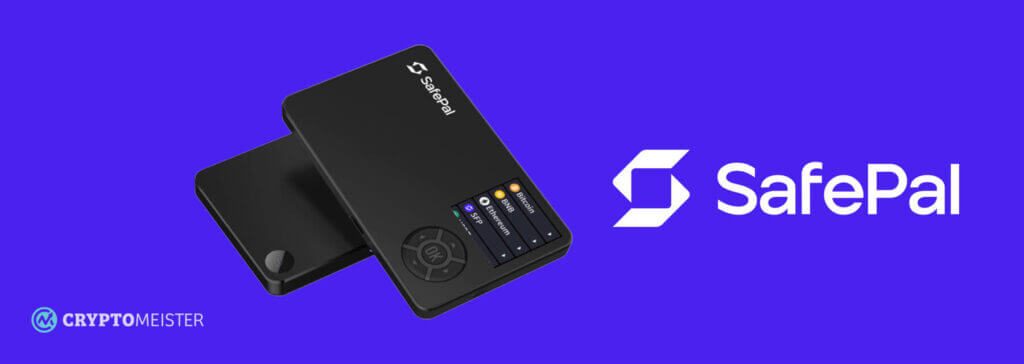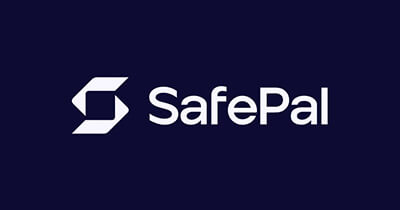SafePal wallet review
If you’re serious about your crypto and NFTs, you should be looking at storing them in a hardware wallet. Hardware wallets are physical devices that keep access to your cryptocurrency offline, making it almost impossible to hack.
There are many different hardware wallets out there, and one of the more recent entrants is the SafePal S1. This hardware wallet is the first produced by the company, which is backed by crypto giant Binance, and was launched in 2019 as an antidote to the more expensive crypto hardware wallets that had been typical until that point.
But does the cheaper price point make the Safepal S1 any less desirable? Let’s find out in our Safepal S1 review.
What is a SafePal S1 hardware wallet?

The Safepal wallet is a black plastic device reminiscent of a large credit card and just over half an inch thick with a camera on the back. This gives it a markedly different look compared to the competition, and it’s clear from first glance that this is not a premium item – the SafePal S1 won’t win any design awards, but it wasn’t intended to.
The SafePal S1 was designed with affordable security in mind for the Web 3.0 movement, and on paper it certainly delivers, with 20 blockchains and 10,000+ tokens supported. As you’d expect with a Web 3.0-targeted device, NFT support is also present across multiple blockchains. The SafePal S1 allows you to buy, sell, and swap cryptocurrencies thanks to integration with Binance exchange protocols, and you can even stake coins through SafePal Earn.
The SafePal S1 has first-time users in mind, and so everything is designed to be easy to use and intuitive, with the associated app being used to conduct transactions and the wallet being used for confirmation. The color screen and directional keys make it child’s play to navigate and give it a much more modern look than other, older wallets.
How does a SafePal S1 wallet work?
The SafePal S1 wallet makes it much harder for someone other than you, the wallet’s owner, to move the assets inside it. This is because the device is never actually connected to the internet, meaning there is a hugely reduced chance of a hack.
Also, because you are holding the key that opens the wallet, you are in full control of what’s inside – you are not handing custody of your coins and NFTs to anyone else. This is by far the safest method of storing your digital assets.
Hardware wallets are in fact more of a key to your wallet rather than the wallet itself. This becomes apparent when you send your assets. Everything is conducted through the SafePal app, and the wallet itself only comes into play when the transaction needs confirming. When you want to send some coins, you simply use the camera on the wallet to scan the QR code of the transaction, confirm your wallet PIN, and the transaction is done.
One downside with the SafePal S1 is that it is only compatible with its own app and not with other wallets or exchanges, such as MetaMask, WalletConnect or MyEthererWallet. This may not be a problem for the absolute beginner, but more advanced users may not appreciate this limitation.
Supported cryptocurrencies
As you would expect from one of the newer hardware wallets on the block, SafePal S1’s cryptocurrency support is vast – bigger in fact than some of the leading cryptocurrency wallets. SafePal says that over 10,000 cryptocurrencies are supported, and with 20 different blockchains also supported this means that there’s a good chance your NFT collection will be compatible too.
Naturally, the SafePal S1 supports the top cryptocurrencies and a range of stablecoins, with users also able to stake a number of coins through the SafePal Earn programme. SafePal S1 provides a full list of supported coins here, but some of the most popular coins and blockchains that SafePal S1 wallets support are:
- Bitcoin (BTC)
- Ethereum (ETH)
- Polkadot (DOT)
- Polygon (MATIC)
- Tether (USDT)
- Litecoin (LTC)
- Binance Coin (BNB)
- Cosmos (ATOM)
- Chainlink (LINK)
- Dogecoin (DOGE)
- Cardano (ADA)
- Tezos (XTZ)
It is always important to check that your coin is among those accepted by a hardware wallet before you send anything over.
SafePal S1 – the lowdown
Price
The SafePal S1 retails at around $50, making it around $30 cheaper than the budget options from market leaders Ledger and Trezor. Clearly this has been pitched at those preferring function over form, and this price point puts it up against other competitors fighting for its market share, such as KeepKey.
Security
The SafePal S1 has a raft of safety measures to protect anyone from gaining unwanted access, including use of the hack-proof EAL5+ secure element with a self-destruct feature, a key deletion tool and two-factor authentication on the app.
One thing to bear in mind is the importance of the wallet’s private key. This key denotes ownership, and is not tied to you as a person – if someone else were to obtain the private key to your wallet, they could do anything with its contents without needing physical access to the wallet.
SafePal S1 devices do not divulge or display the private key. Instead you are given a Recovery Phrase – a string of random words that you can use to recover access to your assets on another device.
It is vital that you keep this Recovery Phrase secure after writing it down during the setup.
Setup
Setting up a SafePal S1 wallet is very easy, and you can find tutorial videos if the instructions aren’t clear. As well as choosing a Recovery Phrase, you will also be asked to choose a PIN for the device. You’ll use this PIN every time you want to access the wallet to confirm transactions for extra security.
Once you’ve got the wallet set up you’ll need to set up the SafePal app on your mobile device, which is where you’ll carry out all the actual leg work.
In the app you’ll need to add wallets for the coins/blockchains you want support for. The difference with the SafePal S1 over other hardware devices is that the wallet apps are stored on your phone’s memory, not on the device, which is typically much more plentiful, offering you support for more wallets than on other devices.
Competition
The SafePal S1 doesn’t market itself in the same bracket as leaders like Ledger and Trezor. These brands offer the same security features, and in some cases are less functional, but they have a reputation for excellence built on years of development.
As a new brand with a more budget-friendly approach, SafePal is in competition with the likes of KeepyKey, which is an older device that supports just 40 cryptocurrencies. KeepKey has a more premium design, but SafePal’s functionality gives it a clear edge, making it a leading player in its category.
The verdict
Overall, the SafePal S1 is probably the best budget cryptocurrency hardware wallet out there at the moment. The fact that SafePal has managed to squeeze in a camera for simple yet secure confirmation and still price it under $50 is a great move, and one that will undoubtedly be copied in the future by the big boys.
The use of the SafePal app for everything is standard these days, and the ability to buy cryptocurrencies through it if you don’t own any already is something that only Trezor currently does well.
It seems churlish to criticize the wallet’s design as being all black plastic, because that is how SafePal managed to keep the cost down – wrap some brushed aluminum around this and suddenly it’s battling the hardware wallet titans for cost. It can’t be ignored however that it very much looks and feels like a budget hardware wallet, so if this is important to you then you may wish to look elsewhere.
Another more legitimate downside is the lack of integration with any third-party platforms and software wallets. Not being able to use the SafePal S1 with MetaMask and WalletConnect puts a barrier between owners and the DeFi ecosystem, one that many users will not know how to climb over.
Despite these drawbacks, it’s hard to find a beginners’ cryptocurrency and NFT wallet that does the job better than the SafePal S1, so providing you know what the limitations are up front, you can’t go wrong.

